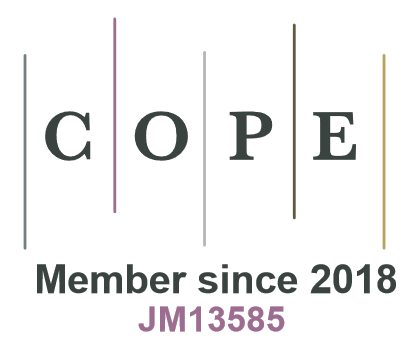Category :
Article
article id 5546,
category
Article
Oliver Schabenberger,
Timothy G. Gregoire.
(1995).
A conspectus on Estimating Function theory and its applicability to recurrent modeling issues in forest biometry.
Silva Fennica
vol.
29
no.
1
article id 5546.
https://doi.org/10.14214/sf.a9197
Abstract |
View details
|
Full text in PDF |
Author Info
Much of forestry data is characterized by a longitudinal or repeated measures structure where multiple observations taken on some units of interest are correlated. Such dependencies are often ignored in favour of an apparently simpler analysis at the cost of invalid inferences. The last decade has brought to light many new statistical techniques that enable one to successfully deal with dependent observations. Although apparently distinct at first, the theory of Estimating Functions provides a natural extension of classical estimation that encompasses many of these new approaches. This contribution introduces Estimating Function Theory as a principle with potential for unification and presents examples covering a variety of modelling issues to demonstrate its applicability.
-
Schabenberger,
E-mail:
os@mm.unknown

-
Gregoire,
E-mail:
tg@mm.unknown
article id 5525,
category
Article
Jari Miina.
(1994).
Spatial growth model for Scots pine on drained peatland.
Silva Fennica
vol.
28
no.
1
article id 5525.
https://doi.org/10.14214/sf.a9159
Abstract |
View details
|
Full text in PDF |
Author Info
A spatial growth model is presented for Scots pine (Pinus sylvestris L.) on a dwarf-shrub pine mire drained 14 years earlier. The growth model accounts for the variation in tree diameter growth owing to the competition between trees, the distance between tree and ditch, and the time passed since drainage. The model was used to study the effect of tree arrangement on the post-drainage growth of a pine stand. Clustering of trees decreased the volume growth by 9–20% as compared to a regular spatial distribution. Stand volume growth, for a given number of stems, was at its maximum and variation in diameter growth at its minimum when the stand density on the ditch border was 1.5–5 higher than midway between two adjacent ditches.
-
Miina,
E-mail:
jm@mm.unknown

Category :
Research article
article id 508,
category
Research article
Kai Vellak,
Jaanus Paal,
Jaan Liira.
(2003).
Diversity and distribution pattern of bryophytes and vascular plants in a boreal spruce forest.
Silva Fennica
vol.
37
no.
1
article id 508.
https://doi.org/10.14214/sf.508
Abstract |
View details
|
Full text in PDF |
Author Info
Small scale pattern of bryophyte communities is one of the remarkable sources of diversity in species-poor boreal forests. By means of correlation and general linear model approaches, the relationships between bryophyte vegetation and upper layers, as well as the response of ground and field layer species to several environmental factors, was analyzed in a boreal spruce forest in South-East Estonia. Of the studied factors, the strongest influence on the diversity and spatial distribution of ground and field layer species was found for ‘distance from nearest tree’. Species from different layers react differently to the proximity of trees. Species richness of bryophytes is higher further from trees, whereas more vascular plant species prefer to grow in the vicinity of tree trunks. For bryophyte species richness, the pH of the decay horizon is also important; fewer bryophyte species occur in more acid conditions.
-
Vellak,
Institute of Zoology and Botany, Estonian Agricultural University, 181 Riia str., 51014 Tartu, Estonia; Institute of Botany and Ecology, University of Tartu, 40 Lai Str., 51005 Tartu, Estonia
E-mail:
kvellak@zbi.ee

-
Paal,
Institute of Botany and Ecology, University of Tartu, 40 Lai Str., 51005 Tartu, Estonia
E-mail:
jp@nn.ee
-
Liira,
Institute of Botany and Ecology, University of Tartu, 40 Lai Str., 51005 Tartu, Estonia
E-mail:
jl@nn.ee
Category :
Research note
article id 631,
category
Research note
Pekka Ripatti.
(2000).
Use of log-linear models in forecasting structural changes in Finnish non-industrial private forest ownership.
Silva Fennica
vol.
34
no.
3
article id 631.
https://doi.org/10.14214/sf.631
Abstract |
View details
|
Full text in PDF |
Author Info
This paper presents how log-linear models can be used for modelling and forecasting structural changes of Finnish non-industrial private forest ownership. Two cross-sectional sets of data, which were collected in conjunction with two separate surveys by means of mail questionnaires in 1975 and 1990, were employed. A total of six non-industrial private forest holding and ownership attributes are forecast focusing on the earlier pace of structural change. The results show that the pace of change in the forecast attributes appears to be less than it would be when derived from extrapolation of the earlier trends. The results of the study can be applied to forest policy and forestry extension planning, by providing a more realistic outlook of the future structure of non-industrial private forest ownership.
-
Ripatti,
Finnish Forest Research Institute, Helsinki Research Centre, Unioninkatu 40 A, FIN-00170 Helsinki, Finland
E-mail:
pekka.ripatti@metla.fi



